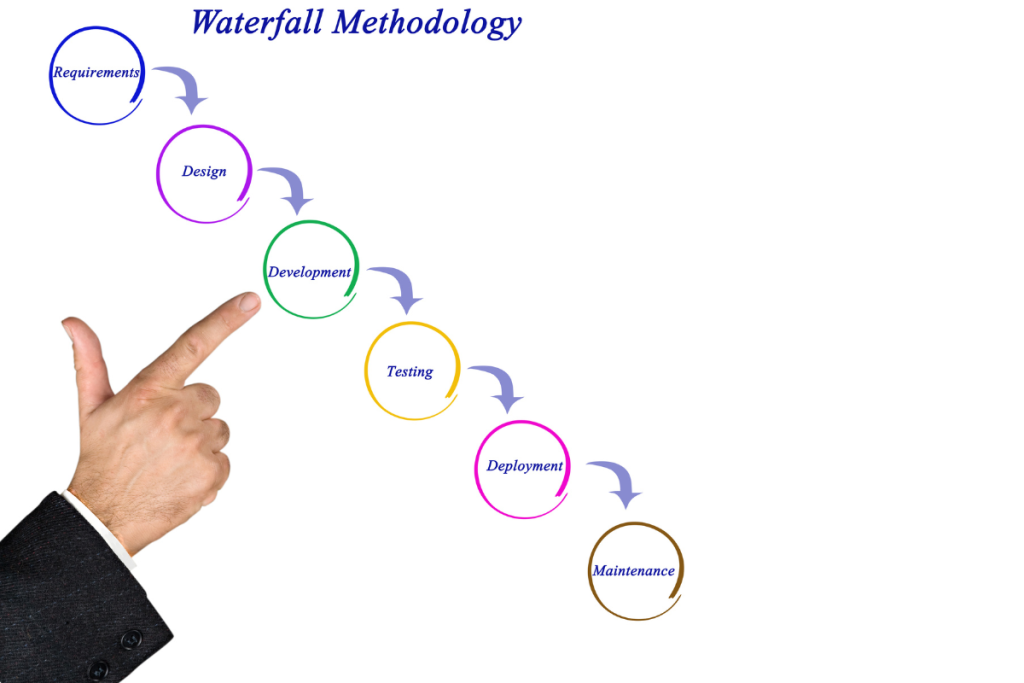What a stakeholder in business? It is defined as any party, be it an individual, group or organisation that has an interest in the company. These parties can influence how a company is perceived, and how it runs its business operations or they can be impacted directly or indirectly by the company’s actions or finances.
Table of Contents
Stakeholders – Introduction
A business can’t function without its stakeholders and all stakeholders have a role to play with different levels of influence over business operations. Stakeholders can be internal or external and examples of stakeholders include but are not limited to; investors, employees, customers, suppliers and the community. Stakeholders also should always be considered in internal business projects – How will your actions be perceived and be influenced by them? Stakeholders are critical to all moving parts of the business and should always be considered.
How Do Stakeholders Influence A Business?
Businesses are made up of lots of different people, teams and invested parties, each with their own direct and indirect interest and impact on the overall success of the organisation. This is the way to consider answering the question posed of, ‘what is a stakeholder in business?’.
This complex ecosystem of stakeholders is made up of individuals, groups or other organisations that are directly involved with, or indirectly affected by a business, and their influence is inextricably linked to its success, failure and how it operates.
The influence that a stakeholder has on a business will largely depend on whether they are internal stakeholders or external stakeholders and how closely linked they are to the business and its operations, but business leaders must be able to engage positively with company stakeholders at all levels as they are crucial to its overall success.
Business owners must therefore successfully balance and manage relationships between internal and external stakeholders to ensure the long-term success of their business. By defining, reviewing and nurturing these key relationships, business leaders create long-term value for their key customers, suppliers, employees and community stakeholders which in turn leads to a strong business model to build upon.
Internal And External Stakeholders
- Internal stakeholders are people like board members, non-executive directors, shareholders, employees and investors directly influence business operations and their interest in a company come through a direct relationship. Their inputs ensure that the business is running smoothly with enough physical, strategic and capital resources to aid the success of its operations. A business relies on its internal stakeholders working closely together towards common business goals.
- External stakeholders are people who do not directly work with a company. This doesn’t mean they can’t impact its performance or can be affected by the actions – that is why they remain as stakeholders. Examples here are customers or suppliers. External investors and external organisations also directly interact with the company and can influence it or be impacted by it and therefore fit into this group.
- Additional external stakeholders also set the operating environment that the business exists in and therefore have an indirect impact on its ability to perform. For example, the media can sway buyer habits and sentiment, the government can introduce new regulations or amend existing rules and unions can impact employee actions.
In every business, both internal and external stakeholders have an important role to play. From making up the work environment itself to shaping the environment that that business operates within, these stakeholders have a direct and indirect impact on how a business operates which will impact business operations, logistics and ultimately profitability.
Stakeholder Types for your Business
Each business will have different internal and external stakeholders and they can have a different influence on business operations. Levels of influence can vary substantually in different circumstances. An example might be a financial services company that prioritise its investors as this is a highly influential sector for it. An oil refinery might however choose to prioritise its operational stakeholders such as logistics. It might even view environmental groups as highly important due to the risk of negative publicity.
Stakeholder Impact
The impact on stakeholders can be broken down into 5 subcategories:
- Financial and operational
- Environmental
- Health and wellbeing
- Capability building
- Satisfaction.
This list can help you ensure you have considered all stakeholder groups.
Business owners should ensure that the key stakeholders are considered in terms of their needs. Consider how these needs can be met and what are the pros and cons of meeting those needs versus those of the company directly.
Financial And Operational Impact
Reviewing the financial and operational impact on your stakeholders means reviewing your key stakeholder’s long-term financial position and how this can be improved over time. For example, this could cover employee wages, shareholder stock price and director dividends.
Whilst actively improving the financial outlook for your stakeholders may increase business costs, it’s important to weigh up the benefit of doing so in terms of the return on investment that you’re making. Take raising employee wages for example, if you can commit to paying over the national living wage you are likely to attract a more engaged workforce with less turnover which could, in turn, reduce expensive recruitment costs and increase the productivity of the staff you have, and therefore increase business profitability. In this example, the benefit is likely to outweigh the cost but you should follow this style of analysis for each stakeholder and the financial and operational decisions made.
Environmental Impact
The environmental impact that your business has on its key stakeholders should be reviewed in terms of the waste, pollution, drain on natural resources and carbon emissions that may impact a wider environmental health. This is obviously a growing area of importance for all businesses, not least because it can then impact the financial issues by taxes and tax breaks.
All businesses are encouraged to take a positive environmental stance. Businesses can attract new funding and enter new markets that assist in green initiatives . Green-centred businesses are often seen more favourably and it can be used a method of attracting free advertising to work done. This in turn can lead to positive impact, engagement and further support with the stakeholders.
For example, we know that climate change is on the agenda of governments around the world and that legislation is coming to mandate carbon emissions. By getting ahead of this curve, you could benefit from government funding and reduce costs by phasing in new environmentally friendly practices when compared to being forced to take action in the future. Examples could be switching to electric company cars or only holding meetings virtually to reduce international travel between offices and subsidiaries.
Health & Wellbeing Impact
Reviewing the health and wellbeing impact on your stakeholders focuses on the health of the company as a whole as well and the wellbeing and health of the individual stakeholders themselves. People like staff are critical here.
Projects could be well meaning and supportive of the business as a whole but if they suddenly add to the majority of your staff’s stress levels by increasing workload or time pressures they will not be without impact. The consideration of work impacts on mental health is crucial these days. Such considerations can lead to attracting the best staff and lower staff turnover.
Capability Building
Capability focuses on the skillset held internally or externally with the business. Projects may require the process of upskilling people and organisations within your key stakeholder groups.
Changing processes may modify the skills required and it is important that for both internal and external stakeholders the possibility of that is reviewed. Whilst not something to necessarily be fearful of, adaption and training may be required or processes will fail or health be impacted if people feel unable to undertake tasks (or do it poorly).
Satisfaction Impact
Satisfaction reviews are often very easy to undertake but easily forgotten. This can do wonders for relationships and productivity. Satisfaction impact should cover both the product and your customer satisfaction but also the role satisfaction in any developments. This therefore overlaps with capability.
Reviews can be undertaken to assess planned or developed changes. This can cover everything from: the quality and speed of communications with new customers, initiatives to improve employee wellbeing, the taste of a new product or the delivery process.
Higher satisfaction levels are linked to profitability and company success so this is an area that business owners should prioritise for their stakeholders.
Problems With Stakeholders
This article has largely focused on the positive impacts that stakeholders can have on a business. It is, however, important to consider stakeholder problems that can arise too.
While having stakeholders that agree with a business’s decisions are helpful it isn’t realistic to expect that all the time. Conflicts will occur. The bigger the project and the more stakeholders that might be affected, the greater the chance this will happen..
Problems can get even more complex as a process that works really well and be encouraged by one stakeholder might be another’s worst nightmare. That is where the influence that those stakeholders have on you and your business comes into play. How you decide to handle the situation might be complex and need other’s input. The balance of these pressures is often the critical complex decisions that businesses have to make.
Awareness and consideration are the first steps to not making mistakes or suddenly having complaints from a party. Many project managers start with a list of stakeholders when considering an approach.
Often conflict between stakeholders may arise but a successful business approach might develop an appropriate compromise. Occasionally you even need to recognise the problem but disagree!
Building Strong Stakeholder Relationships
We have demonstrated the level of involvement and impact that stakeholders have in all facets of the business operations. Whilst not every stakeholder is directly met daily, and when you include customers, may not ever be met, their importance is critical. When changing processes all stakeholders should be considered.
Customers or purchases are important for every business. So ensuring that you listen, learn and adapt to consumer buying behaviour by tracking how they find the business, what leads them to purchase with you and how things like pricing impact their buying decisions, you can take action that directly impacts your bottom line.
Conclusion
Hopefully, we have given you a good understanding of what a stakeholder is in a business. The short answer is anyone who is influenced by it or influences it. This obviously covers pretty much anyone that comes into contact with it – even indirectly.
You can’t directly question and review all of your stakeholders. Any HR department knows it is hard enough to review your own staff’s thoughts and problems and they sit within the building. It is however critical that you always at least consider your wider stakeholders, often those we refer to as External Stakeholders.
In this article, we used a simple checklist of the types of impacts that you can have on your stakeholders and we suggest you can use this list to help consider them all.
It is an easier process then to consider how you might be impacting your stakeholder with your actions or changes in processes and at least you are then aware and can consider when it might be needed to reach out to them.
Also see our article business nature meaning.

























































































































































